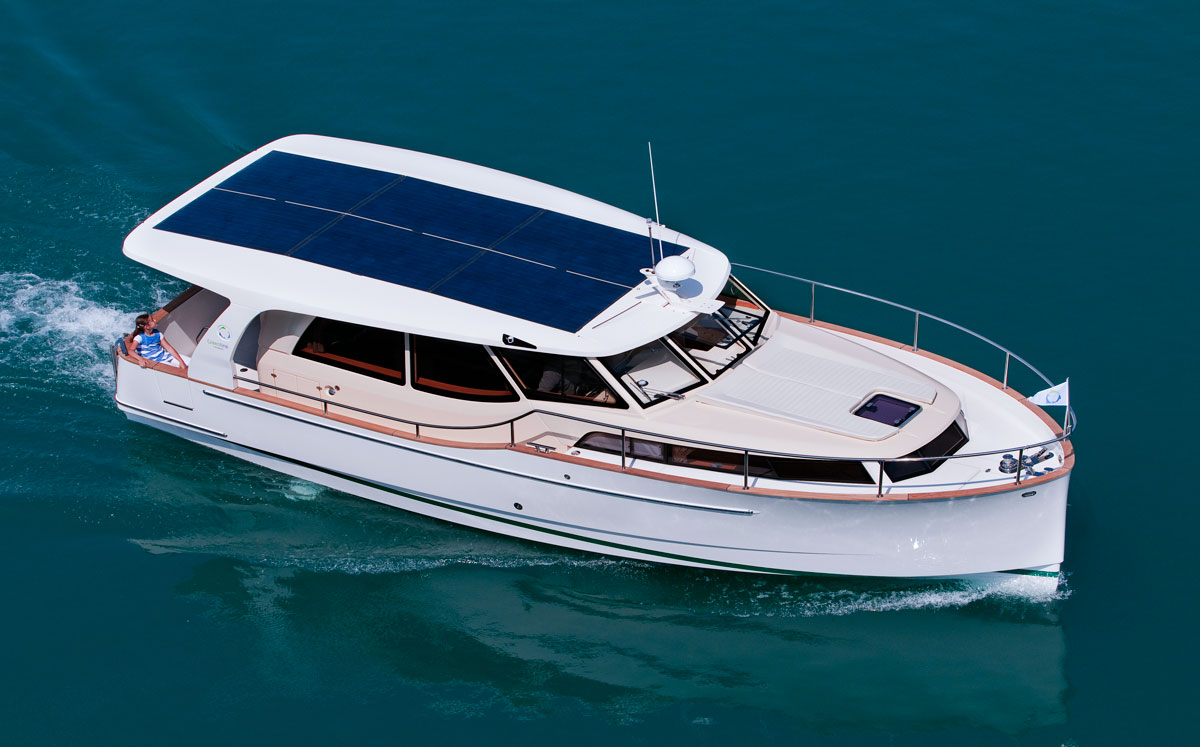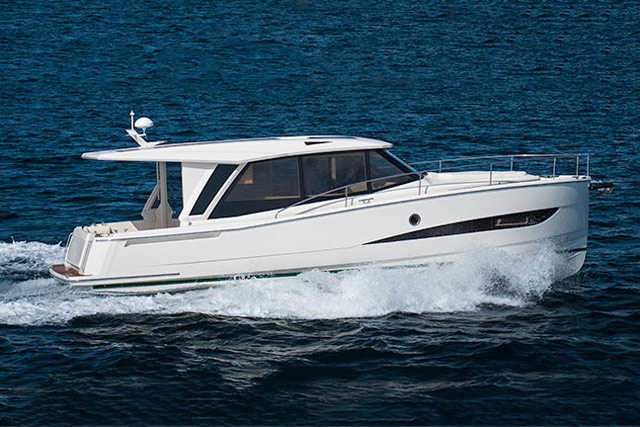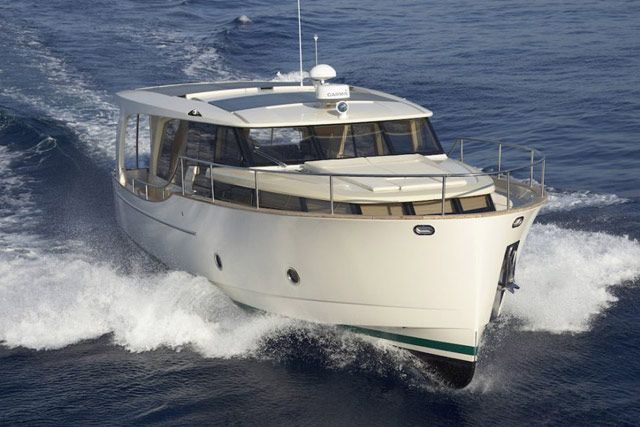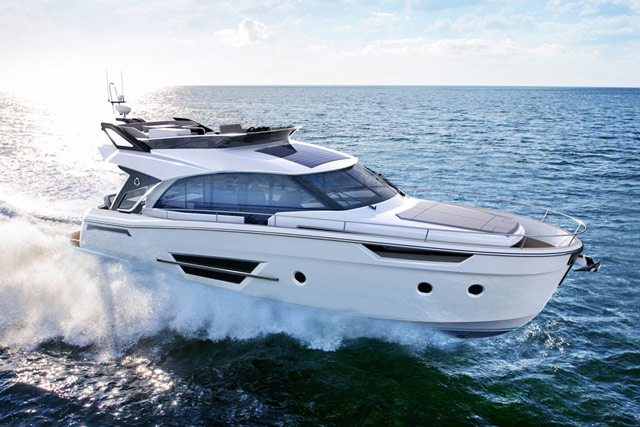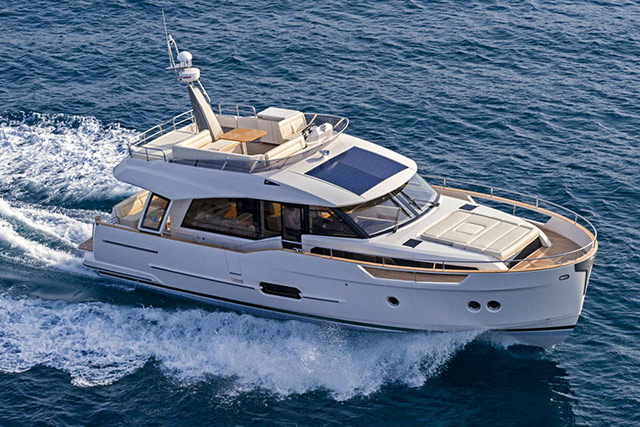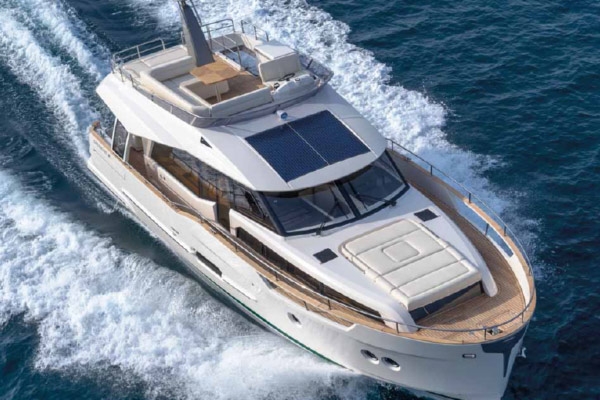Tens of thousands of years ago, humankind discovered that standing on a log and pushing with a stick would allow a person to cross a pond or a shallow lake. The push pole evolved into an oar, and we ventured across seas and along coastlines. Some genius figured out how to sail with the wind, and we crossed oceans.
We assumed for eons that maritime propulsion had evolved to its ultimate destiny. Then came the Industrial Revolution. Over several decades, Eli Whitney invented the steam engine and Etienne Lenoir, Nicholas Otto, and Rudolf Diesel all invented versions of an internal combustion engine. Throughout the last century, either the wind or a petroleum fired mechanical engine provided propulsion for pleasure craft.
The Solar Revolution is upon us. The yachting community and the maritime industry are actively adopting the next step beyond petroleum powered propulsion. Solar yachts, vessels propelled by the sun, are showing up in ports and marinas around the world.
What defines a solar yacht?
Any pleasure vessel using electricity derived from solar panels as a primary or alternative source of power for propulsion can be considered a solar yacht. Even if there are other propulsion systems aboard, the term “solar yacht” may be legitimately used. Consider that we call a vessel with masts and a “sailboat” even though there is typically another propulsion system available. The sails are seldom in constant use. Likewise, most solar yachts are not exclusively or constantly powered with electricity generated from photovoltaic cells.
Unique pleasures of solar and electric yachting
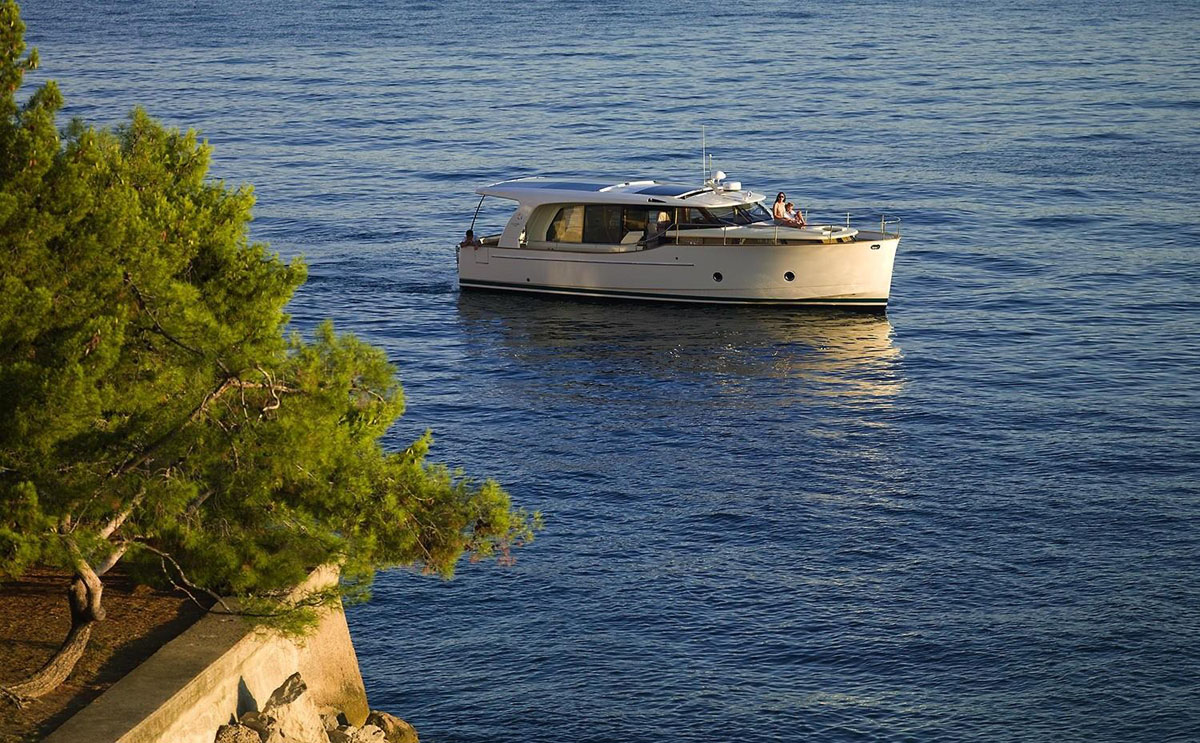
Sailors are more quickly prepared to appreciate the esthetic joys of traversing the waters at a leisurely pace. Imagine cruising where the cries of seabirds swirling overhead, the gentle slap of waves against the hull, and normal conversational tones are not drowned out by the 60, 70, or 80 decibel background drone of a rumbling diesel or thundering gasoline power plant. On an electric yacht, a shift in the wind doesn’t send everyone fleeing from the aft deck as exhaust smoke and fumes foul the air.
While a solar yacht will facilitate many happy experiences formerly reserved for sailors, there’s no need to scramble around the deck adjusting sails and rigging. No need to adapt to cruising “heeled over” at a 20 or 30-degree angle. No need to wait for the next opening of a drawbridge.
Solar yachts combine the ease of mechanical propulsion with the majesty of sail.
Limitations of solar yachts
Everything “under the sun” (pun intended!) has both advantages and limitations. The major limitations with solar powered yachts, compared with petroleum powered vessels, are range and speed. The hundreds or thousands of gallons of increasingly expensive fuel aboard a petroleum powered yacht provide a predictable, and often long range. The range comes at definite and measurable cost, as even moderate cruising speeds can burn more 3, 4 or more gallons per nautical mile. (One might observe that under sail range is unlimited- at least on those days when the wind is cooperating).
Very few builders are producing yachts relying exclusively upon solar power. Such vessels are recognizable by an oversized array of panels. Critics compare their appearance to an aircraft carrier defined by a huge flight deck, or a “floating solar farm.” The larger the square footage exposed to sunlight, the greater potential for electric power- but at some point, the sheer size becomes unworkable in close quarters and sea-keeping characteristics can radically change. Even with a 100% solar design, speed and range limitations remain.
According to leading scientific experts, the sun doesn’t shine at night. Just as sailboats rely on alternative power when the wind isn’t blowing, solar yachts will require an additional source of propulsion to allow operation after dark.
Solar yachts and current technology
Solar voltaic technology is rapidly advancing, but it’s likely that the industry remains decades away from any breakthrough technologies that will provide a 100% solar yacht with range and speed options comparable to contemporary petrol-powered vessels.
Fortunately, hybrid technology facilitates combining the benefits of solar yachting with the greater speeds and longer ranges of yachts powered solely by internal combustion engines. Everyone is familiar with hybrid technology in use by automobiles. Electric motors operate the vehicle at slower speeds, with an internal combustion on standby for longer distance and higher speed driving. The automotive and marine approaches to “hybrid” power are similar.
The largest commercial ships normally rely on a "serial" system, which uses diesel-driven generators to create electricity to energize motors turning the propeller shafts. In contrast, smaller vessels and private yachts use a “parallel” hybrid system, which uses two or more methods of propulsion to turn a prop shaft. Hybrid redundancy provides a margin of safety and convenience. Should one propulsion system fail for any reason, there’s “backup” available so a vessel can remain underway. Most solar yachts are configured as hybrids, with electricity from solar panels used to recharge batteries powering electric motors.
Greenline solar hybrid yachts

Greenline Yachts is the acknowledged leader in the solar hybrid yacht industry. While many builders have solar and hybrid powered boats “on the drawing board,” Greenline has launched more than 600 premium-quality vessels since establishment in 2009.
Greenline’s approach to solar yachts includes the reasonable and aesthetically pleasing use of solar panels on the upper surfaces of their boats. Energy from the photocells is transferred through a converter-charger to a large bank of lithium/ion batteries below decks- occupying the space where one would expect to find the large engines and fuel tanks on a petrol- powered yacht.
Greenline resolves speed and range considerations by employing small diesel engines driving the same shaft as the electric motors. Like the automotive application, the electric motors manage the slow speeds, and the diesel engines are called upon when higher speeds are desired. When the internal combustion portion of the hybrid system is in use, it provides an elevated level of DC power to quickly and efficiently recharge the storage batteries.
Solar cruising is now a reality
Greenline Yachts specify that their solar hybrid vessels can travel 20 nautical miles, up to 6 knots (sailing speed) without engaging the diesel-powered portion of the system at all. With an optional expanded lithium battery bank, a range of 40 nautical miles can be achieved. Many boaters who are not in a particular hurry to “get there” will discover that a 40 nautical mile range is more than adequate for local excursions on summer evenings, or even a weekend cruise to a nearby park or marina.
Most pleasure boaters spend more time on the water during the summer months. Days are much brighter and longer. More solar energy is available to rapidly recharge the batteries and extend the range of a solar yacht.
Solar yachts used primarily for cruising from one marina to another have access to an already existent charging network- the shore power pedestal at every slip. Lithium batteries charge in about half the time of old-fashioned lead/acid batteries. Lithium batteries can be discharged further, additionally extending range.
Solar yachts can enhance the experience when cruising to remote locations. Many docks at destinations in northern BC and Alaska, for example, have no shore power. Solar panels will keep the battery banks topped off to provide lights, refrigeration, and other essential needs no matter where one chooses to dock or anchor. No need to disturb the peace and tranquility by firing up a noisy generator.
There is, however, one destination that solar hybrid yachts won’t visit with any remarkable frequency: the local fuel dock.

